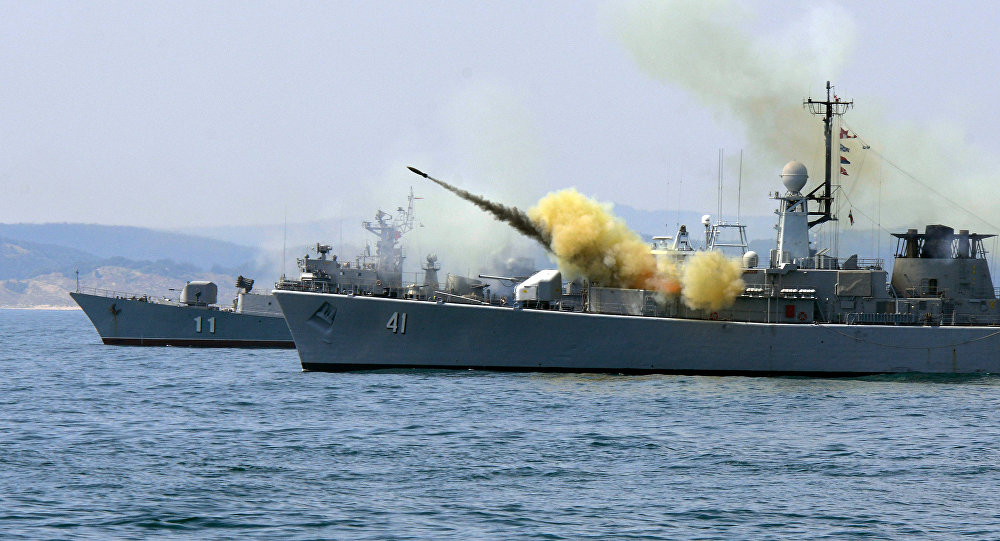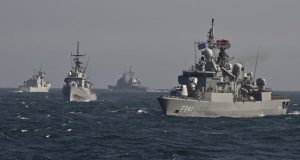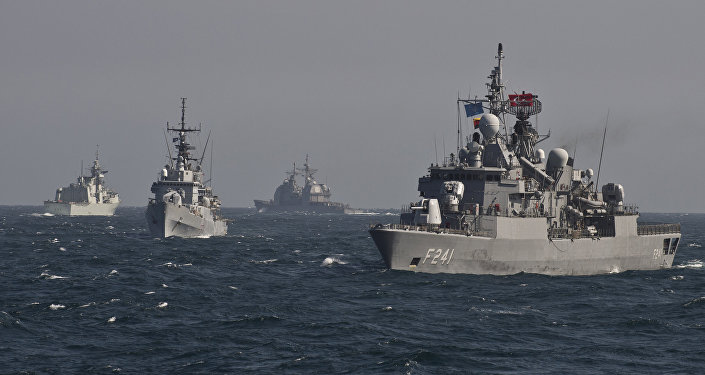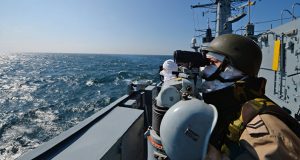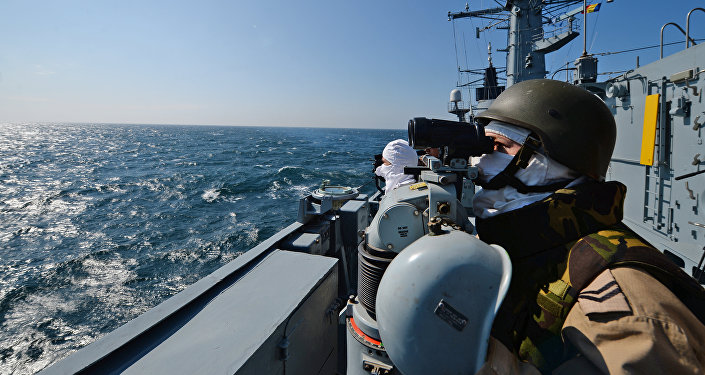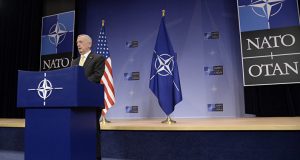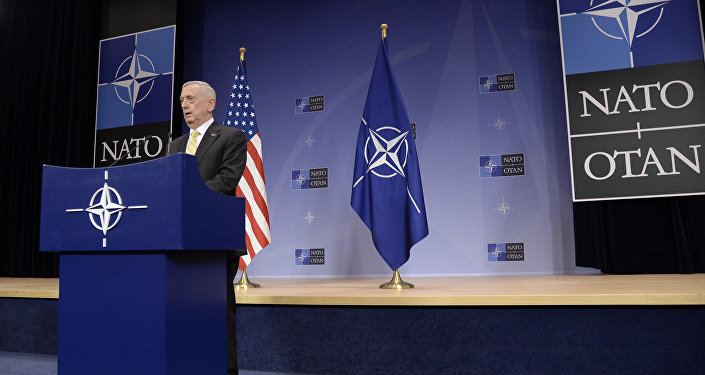On February 16, NATO defense chiefs at a summit in Brussels approved two major decisions, including on ramping up its naval presence in the Black Sea and on establishing coordination between national navies and the permanent NATO task force in the region.
According to the alliance’s Secretary General Jens Stoltenberg, an increased presence in the Black Sea will include further intensification of training exercises and drills as well as improved awareness of the regional situation.
Speaking with journalist, Stoltenberg underscored that the planned actions are not aimed at provoking tensions, but at deterring Russia in the region.
Buildup
Stoltenberg first indicated in late-January that NATO would increase its presence in the Black Sea.
“We are strengthening our presence in the Black Sea region, with a package of measures on land, at sea and in the air. And we will finalize this work at our meeting of defense ministers in February. And several Allies have already indicated they will contribute to this presence,” the secretary general said during a press conference on January 31.
Stoltenberg also underscored that all the planned actions would be carried out in accordance with the Montreux Convention.
The 1936 Montreux Convention on the Regime of the Bosporus Strait and the Dardanelles regulates the passage and presence of naval ships in the Black Sea.
According to the document, non-Black Sea nations must not send to the region a naval force with a total displacement of over 30,000 tons. For comparison, the USS Mount Whitney, the flagship of the United States Six Fleet, has displacement of 18,400 tons. The NATO maritime standing group in the Mediterranean comprises eight vessels with a total displacement of 16,000 tons.
Moreover, non-Black Sea countries are required to notify Turkey, a NATO member, at least 15 days before the planned passage via the straits to the Black Sea. Naval ships of non-Black Sea countries may not remain in the waters of the Black Sea for at most 21 days.
“According to the convention, the displacement is accounted for on the national basis. In order to build a capable force in the Black Sea, just one ship from each of the 28 NATO members would be enough,” Mikhail Alexandrov, a senior analyst at the Center for Military and Political Studies, at the Moscow State Institute of International Relations (MGIMO), told RBK.
Director of Programs at the Russian Council for Foreign Affairs Ivan Timofeev explained that the time restriction could be bypassed with a rotation of ships.
Alexandrov suggested that NATO will not be able to deploy to the Black Sea a sufficient force to withstand the Black Sea Fleet and Russia’s coastal defense, including Bastion defense systems in Crimea and Anapa.
The expert described the initiative as a hostile move, but not as an attempt to disturb the regional balance of power.
“NATO’s goal is to restrict Russia’s maneuvers in the Black Sea and maintain military and political pressure,” he pointed out.
Deterrence
The idea of a permanent NATO naval presence in the Black Sea was first proposed by Romania in June 2016. In December 2016, Romanian Defense Minister Mihnea Motoc voiced concerns about a “constant degradation” of security on NATO’s eastern flank.
“Romania, like NATO and the EU, remains open to dialogue with Russia. However and at least for the short term, we have to factor in very seriously and responsibly the grave altering of confidence and the complex security environment we live in,” Motoc said in an interview with the Irish Times.
In February, Bucharest directed the Naval Shield 2017 exercise in the Black Sea.
Taking into account those activities, the final decision on a military buildup is a symbolic gesture advantageous for the old and the new members of the alliance, according to Timofeev.
On Thursday, Stoltenberg repeatedly stressed that NATO takes defensive positions, wants dialogue and will not deploy to its eastern flank a military power that would outclass its potential enemy’s forces.
“NATO newcomers in Eastern Europe want to attract attention and raise the question of security guarantees in face of the Russian threat. Brussels responds with symbolic steps,” Timofeev explained.
According to the analyst, the planned NATO buildup in the Black Sea fully complies with the alliance’s previous course on slow confrontation with Russia and will not be a watershed in Russia-West relations.
The expansion of NATO is aimed at deterring Russia as the main threat to the alliance, Russian President Vladimir Putin said Thursday at the Federal Security Service (FSB) board.
“At the NATO summit last July in Warsaw for the first time since 1989, Russia was recognized as the key security threat for the alliance, and its deterrence was officially proclaimed the new NATO mission,” Putin said.
Timofeev noted that Moscow understands that the situation should not be dramatized, but “certain conclusions about the new arms race will be made.”
In response to the NATO drills in February, Russian Defense Minister Sergei Shoigu said that the Russian military was closely monitoring alliance’s moves.
New Spending Policy
During the Brussels meeting, Washington was represented by new Pentagon chief James Mattis.
On February 15, Mattis said: “We remain open to opportunities to restore a cooperative relationship with Moscow, while being realistic in our expectations and ensuring our diplomats negotiate from a position of strength.”
The statement provoked a negative response from Moscow. Russian Defense Minister Sergei Shoigu underscored that attempts to build dialogue from a position of strength is “futile.”
During the summit, Mattis also paid special attention to NATO defense spending. During his electoral campaign and after his victory, US President Donald Trump has repeatedly criticized NATO in its current form. The president called the organization “obsolete” and incapable of fighting terrorism. Trump has also called on NATO members to increase defense spending.
Within the 2006 principle of common funding, all 28 members of NATO should spend on defense no less than two percent of GDP. In 2015, only the US, Britain, Greece, Poland and Estonia met the target.
Washington’s discontent over its European allies was brought up in a joint statement made by Stoltenberg and Mattis on Wednesday. According to the secretary general, NATO has long been engaged to work out a fairer defense expenditure model.
“After many years with steep cuts in defense spending, we have turned a corner. Today, I can present to you new, updated figures for 2016. Defense spending in real terms has increased by 3.8 percent among European allies and Canada,” he said.
